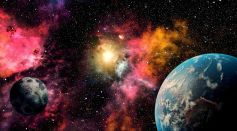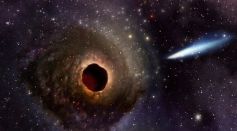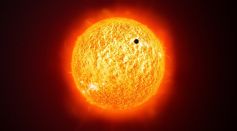SPACE
Experts Propose to Build a Next-Generation Telescope After the Collapse of the 60-Year-old Arecibo Observatory

Why UAP Stories Keep Resurfacing on News? Retired Intelligence Community Whistleblower Claims US Government Hides Crashed UFOs

Buck Moon To Occur in July: Here’s What To Expect in the First Full Supermoon of 2023

No, It's Not Planet X: Rogue Exoplanet Could Be Hiding in Oort Cloud at Solar System's Edge, Study Suggests

New Alien Sighting Reported in Las Vegas in the Same Backyard Where UFO Was Spotted Weeks Ago
Crew Members of Galactic 01 Mission Prepare for Virgin Galactic’s First Commercial Spaceflight

Stunning Footage Reveals House-Size Asteroid's Incredible Speed as Astronomers Track its Near-Earth Journey
Did Ancient Maya Tracked Comets and Novas? Experts Present New Evidence of This Astronomical Feat
Robotics Company Designs Power Grid on the Moon Using Lunar Resources To Generate Solar Energy

NASA's MAVEN Mission Reveals Psychedelic Colors of Mars in Stunning UV Images
4 Astronauts Start Living Inside Mars Dune Alpha To Be Studied for Simulated Red Planet Missions

James Webb Space Telescope Captures the Deepest Peek Yet of the Epoch of Reionization in the Universe

Milky Way's 'Sagittarius A' Black Hole Might Not Be as Dormant as Previously Thought

Monstrous Sunspot Unleashed the Carrington Event, History's Most Destructive Solar Storm
Most Popular

What Causes Tornadoes and How They Form: Tornado Science Explained for Extreme Storms

Extreme Weather Science Reveals How Climate Change Patterns and Global Warming Transform Earth's Weather

Why Pandemics Keep Happening: Pandemic Cycle and the Rise of Emerging Diseases

How Planets Form: Planet Formation and Protoplanetary Disks in Solar System Creation





